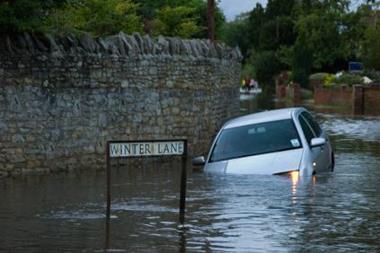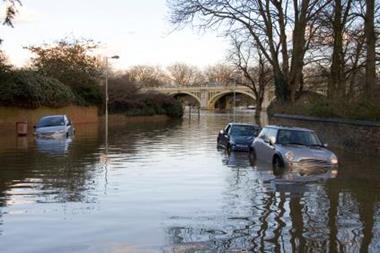S&P warns that this year's severe weather is likely to put property underwriting results in the red
It is hardly surprising for Standard & Poor’s to highlight the general insurance industry has been hit hard this year, by three large weather events. But when it adds that in aggregate, the events could add nearly 40 percentage points to the industry’s property gross loss ratio for 2007 and more than 10 percentage points to its overall gross loss ratio for the year, things are put into perspective.
Not only will the events be a significant loss in the industry’s property line of business for 2007, it will probably leave its overall underwriting result in the red for the year. So S&P is continuing to keep a close eye on the impact of these events, but, interestingly has so far not made any rating changes due to these events alone.
This is a positive and reflects the generally robust capital adequacy and healthy recent underwriting performance of the rated insurance companies.
Nevertheless, as the full extent of losses from the last event in particular is far from being ascertained and with five months remaining in the year, further large weather events could yet occur that might prompt negative ratings actions.
The three weather events S&P has identified are: Kyrill, a storm that hit large parts of the UK in January and was reported by the ABI in February, to have cost insurers £350m. The floods in June, which the ABI assessed recently at £1.5bn and the floods in July which are still occurring and where the cost has been estimated by the ABI at around £2bn, although S&P says it is realistic to expect a final figure in excess of £3bn and Insurance Times last week revealed a figure from Deloitte that estimated a £5bn figure.
The vast majority of these losses will be property related, including business interruption, although motor and liability losses are expected. To put this into context, the most expensive weather losses, using today’s prices, cost insurers £3.3bn for the high winds that occurred in early 1990.
Assuming that all losses are property related, S&P estimates that a £3bn aggregate loss will add approximately 28 percentage points to the gross loss ratio for the industry's property line of business, and a £4bn loss, 37 percentage points. If one assumes that a normal annual loss from weather events is arguably £1bn, the abnormal additional gross losses from these events would add 19 percentage points £3bn and 28 percentage points £4bn.
“The vast majority of the losses will be property related, including business interruption, although motor and liability losses are expected. To put this into context, the most expensive weather losses, using today's prices, cost insurers £3.3bn for the high winds that occurred in early 1990.
Although the amount of the gross losses that will be absorbed by the reinsurance industry is not yet known with any precision, a working assumption of 33% of gross losses paid by reinsurers puts the additional net losses at about 23 percentage points £3bn and 31 percentage points £4bn.
Consequently, it is almost certain that the recent run of underwriting profitability for UK property risks will have been eliminated and turned into a significant net loss for 2007.
The impact of these events will be markedly different between insurance companies, however, depending on the risk profile of their property book of business, their diversification by line of business and geographically, and the structure of their reinsurance protection, both vertically and horizontally.
Property insurance, particularly commercial property, has been under varying degrees of price pressure this year. S&P expects this pressure overall will decrease following the latest floods, with commercial and personal property rates for flood-affected areas very likely to rise. The swing factor may well be the response of reinsurers to these losses, a significant proportion of which were thought to be remote, and that is not clear at this stage.
Apart from the operating and capital impact of these events, S&P is also reviewing insurers’ enterprise risk management (ERM) and, in particular, what changes, if any, insurers have determined they need to make to their ERM as a result of these events.
For example, it will look at the actual exposure of insurers to these events in comparison with insurers’ modelled or estimated exposures and determine if any discrepancies exist. And if so,why.
Hosted by comedian and actor Tom Allen, 34 Gold, 23 Silver and 22 Bronze awards were handed out across an amazing 34 categories recognising brilliance and innovation right across the breadth of UK general insurance.











































No comments yet